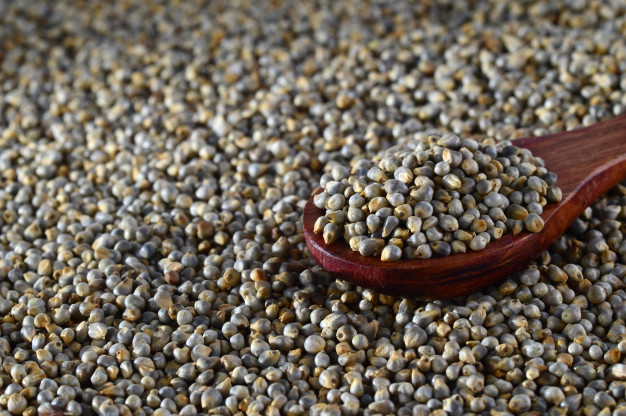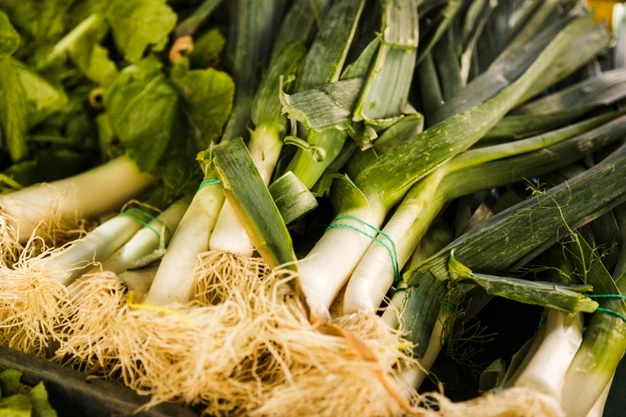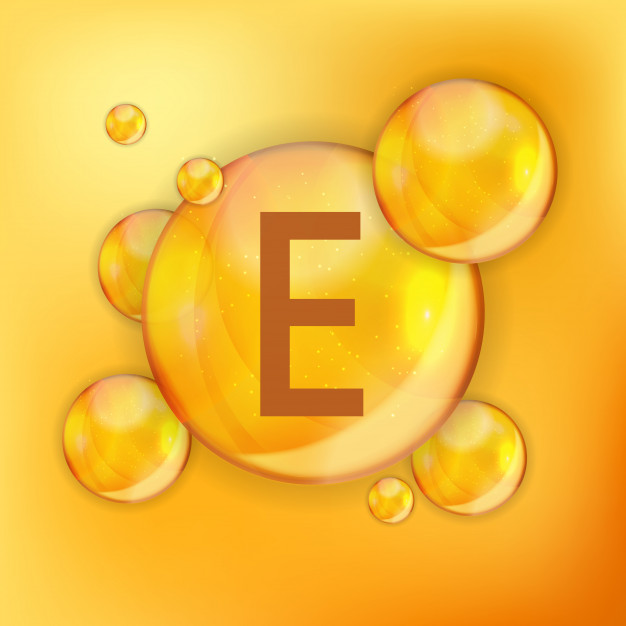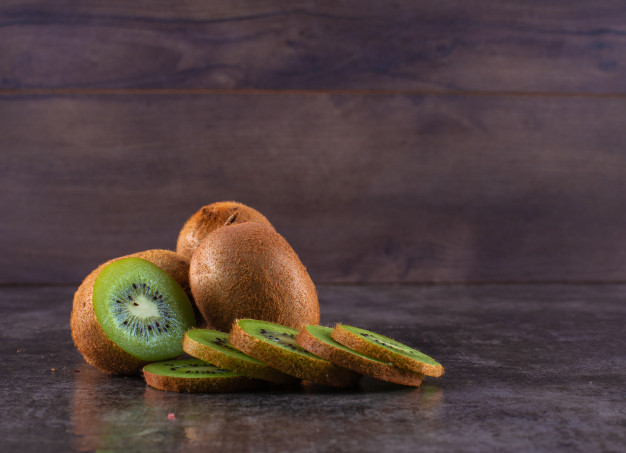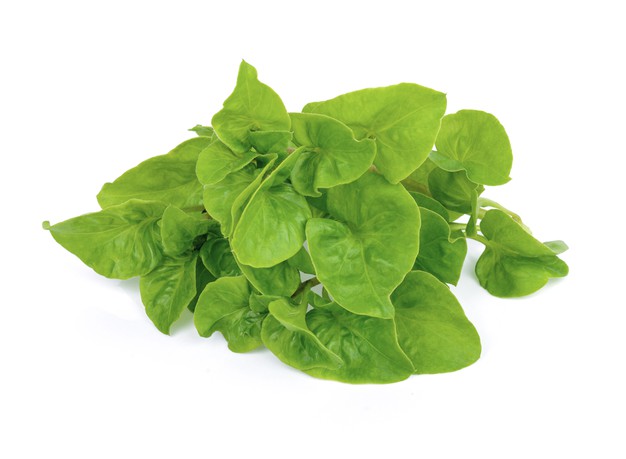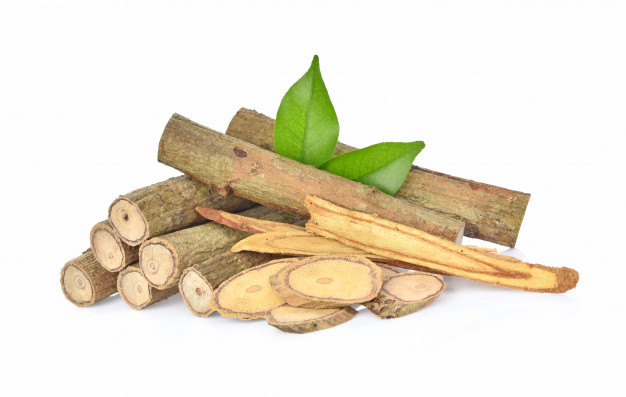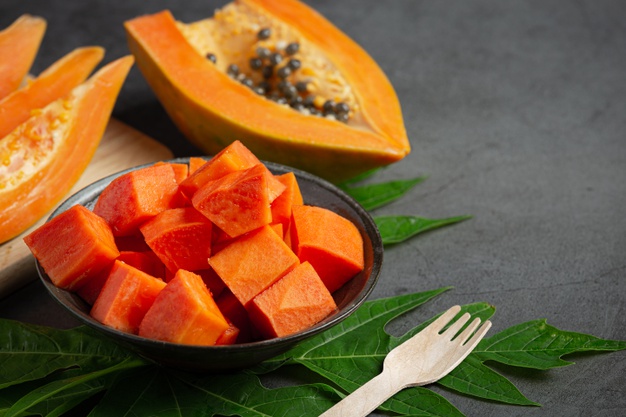Bajra also known as pearl millet is a nutrient dense crop and also considered as a major millet, which has been traditionally used for various therapeutic purposes.
Why bajra is considered as the best winter food?
Coffee or tea are widely consumed in winter for chilling the body but excessive consumption of these two beverages are responsible for developing various health hazards like it may cause dehydration, hinder nutrients absorption and gastrointestinal disturbances. Therefore it is better to consume such food that can beat the chills without harming the body and bajra is recognized as the best option as it comes under the category of thermogenic food with very less or no side effects.
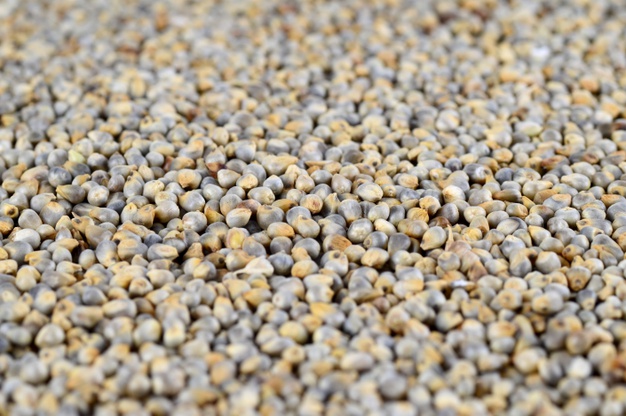
Nutritional profile
- It contains desirable amount of carbohydrates especially complex carbohydrates and dietary fibre
- It contains significant amount of protein as well it is considered as one of the most important plant protein. Consumption of bajra along with other legumes is very beneficial for vegans
- It contains healthy fat as it is rich in omega-3-fatty acid
- It contains numerous micronutrients like Vitamin K, Vitamin E, Vitamin B1, B2, B3, B5, B6, B9, calcium, phosphorus, sodium, potassium, iron, zinc, copper, magnesium, selenium and manganese, which offer several health benefits
- It is packed with various phytochemicals, which are responsible for exerting antioxidant, anti-inflamatory and anticarcinogemic effects

Health benefits
Role on digestive health
- Bajra is considered as an effective prebiotic due to its insoluble fibre content and it acts as the feed for intestinal beneficial microbes. Consumption of bajra is very useful for promoting the growth of intestinal flora hence improves gut health
- Its insoluble fibre content plays imperative role in promoting digestion as well
- It is also associated with enhancing bowel movement thus helps to improve the symptoms of constipation
- Bajra is alkaline in nature thus its consumption is extremely helpful for combating acidity. We know that stomach produces acid (HCL) that helps in digestion but over production of acid due to some gastrointestinal disorders or stress or consumption of food at irregular interval, harm the body very adversely. In this condition bajra is considered as one of the best option for preventing acidity, bajra khichdi can be consumed for pleasing the stomach
- It helps to prevent stomach ulcer as well
Role on weight management
- Its fibre content plays significant role in facilitating weight reduction
- It is related with preventing over eating by providing a feeling of stomach fullness. Decrease in food intake with normal calorie expenditure is accountable for developing a negative energy balance that ultimately helps in weight reduction

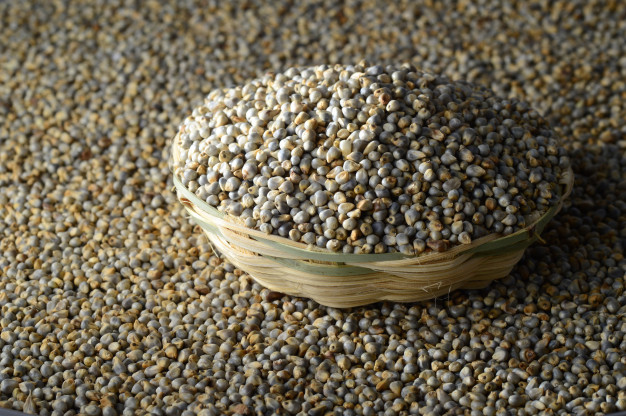
Hypocholesterolemic activity
- Phytic acid and fibre components of bajra play important role in enhancing cholesterol metabolism
- It helps to decrease the concentration of LDL, VLDL in body whereas improves the effect of HDL or good cholesterol thus its consumption is very much useful for maintaining a healthy ratio of LDL and HDL in body hence improves lipid profile
Role on endurance
- Its high protein as well as fibre contents and the nature of alkalinity make it an imperative substance for enhancing endurance
- Inclusion of bajra in the diet of endurance athletes significantly improve their performance ability
Antioxidant activity
- It is packed with phenolic compounds especially with flavonoids, which act as strong antioxidant
- It helps to protect the body from the harmful effects of free radicals and reactive oxygen species (ROS) thus decreases the risk of developing oxidative stress and chronic diseases
Role on skeletal system
- Its high calcium and phosphorus contents are accountable for promoting bone growth and development
- It is also associated with preventing bone inflammation thus its consumption is very beneficial for arthritic patient

Role on skin
- Its antioxidant activity is responsible for preventing ageing
- Zinc found in bajra plays imperative role in repairing skin damages and also promotes healing
- It helps to decrease the prevalence of acne and pimple
Role on metabolism
- Bajra contains adequate amount of B vitamins, especially Vitamin B1 or thiamine that plays vital role in carbohydrate metabolism
- Vitamin B1 acts as cofactor (in the form of TPP or thiamine pyrophosphate) and participates in various metabolic reactions of carbohydrate
Role on hepatic health
- It contains catechins, which play vital role in improving hepatic function
- Its fibre content, antioxidant activity and hypocholesterolemic activity are also accountable for promoting liver health as they help to prevent fatty infiltration of liver thus reduces the prevalence of hepatic cell necrosis, fatty liver diseases and cirrhosis
- It helps to decrease the risk of developing gall stone as well as it helps to regulate cholesterol level in body

Disease preventive role of bajra
Cardiovascular disease
- Its cholesterol lowering activity and fibre contents are liable for reducing the risk of developing atherosclerosis hence coronary artery diseases
- Its antioxidant activities are responsible for promoting cardiac health by protecting the heart from oxidative damages
- Magnesium found in bajra also helps to keep the heart well
- Its potassium content plays imperative role in dilating blood vessels and helps in easy blood flow thus prevents hypertension

Diabetes mellitus
- Its high fibre content makes it an imperative food for diabetic patient. As fibre is responsible for decreasing the absorption of glucose from intestinal epithelial cell to blood hence it helps to decrease blood glucose load
- It is also considered as a low glycemic food thus it can be easily included in diabetic diet
- Magnesium component of bajra plays important role in controlling the activity of glucose receptor that helps to reduce the prevalence of diabetes as well
Anemia
It contains adequate amount of iron, copper, zinc and folic acid, which are essentially required by the body for hemoglobin synthesis as well as for the maturation of RBC thus its consumption is very much helpful for decreasing the prevalence of anemia
Cancer
- Omega-3-fatty acid and flavonoid components of bajra are responsible for exerting anti-carcinogenic activity
- It helps to suppress the growth and multiplication of cancerous cells by inhibiting the proliferation of HT-29 adenocarcinoma cells
- It is associated with preventing the oxidation of liposome as well as LDL and also inhibits DNA scission, which ultimately decreases the prevalence of carcinoma

Celiac disease
- Celiac disease is a digestive disorder, which is characterized by an abnormal immune reaction to gluten
- Gluten is a protein generally found in millets (especially in wheat) that is responsible for making the dough elastic and hence gives the bread a chewy texture
- Individuals who suffer from celiac disease should consume gluten free diet as they cannot tolerate gluten and bajra is considered as one of the best option for them as it is recognized as a poor source of gluten
Culinary uses
- It can be consumed at any time like at breakfast or lunch or dinner
- It can be blended to produce flour for preparing quick and healthy recipe like roti, khakra, dosa, burfi, khichdi etc
- It can also be consumed as whole bajra or bajra flour or sprouted bajra or fermented bajra
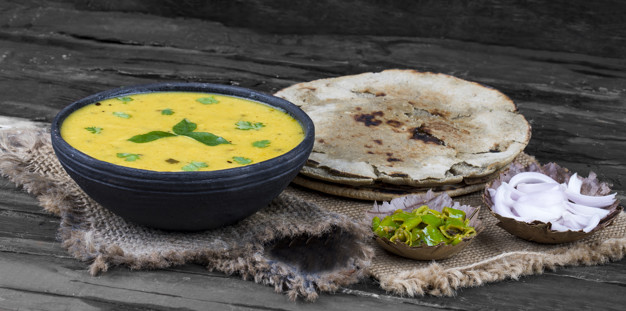
Risk factors
It has seen that bajra contains goitrogens, which interfere with iodine absorption and affect the functions of thyroid gland thus individual with thyroid disorders should avoid its consumption.

Source:
Boncompagni, E., Orozco-Arroyo, G., Cominelli, E., Gangashetty, P.I., Grando, S., Kwaku Zu, T.T., Daminati, M.G., Nielsen, E. and Sparvoli, F., 2018. Antinutritional factors in pearl millet grains: Phytate and goitrogens content variability and molecular characterization of genes involved in their pathways. PloS one, 13(6), p.e0198394.
Dias-Martins, A.M., Pessanha, K.L.F., Pacheco, S., Rodrigues, J.A.S. and Carvalho, C.W.P., 2018. Potential use of pearl millet (Pennisetum glaucum (L.) R. Br.) in Brazil: Food security, processing, health benefits and nutritional products. Food research international, 109, pp.175-186.
Kumari, R., Singh, K., Jha, S.K., Singh, R., Sarkar, S.K. and Bhatia, N., 2018. Nutritional composition and popping characteristics of some selected varieties of pearl millet (Pennisetum glaucum).
Malik, S., 2015. Pearl millet-nutritional value and medicinal uses. Int. J. Adv. Res. Innov. Ideas Educ, 1, pp.414-418.
Nambiar, V.S., Dhaduk, J.J., Sareen, N., Shahu, T. and Desai, R., 2011. Potential functional implications of pearl millet (Pennisetum glaucum) in health and disease. Journal of Applied Pharmaceutical Science, 1(10), p.62.
Slama, A., Cherif, A., Sakouhi, F., Boukhchina, S. and Radhouane, L., 2020. Fatty acids, phytochemical composition and antioxidant potential of pearl millet oil. Journal of Consumer Protection and Food Safety, 15(2), pp.145-151.
